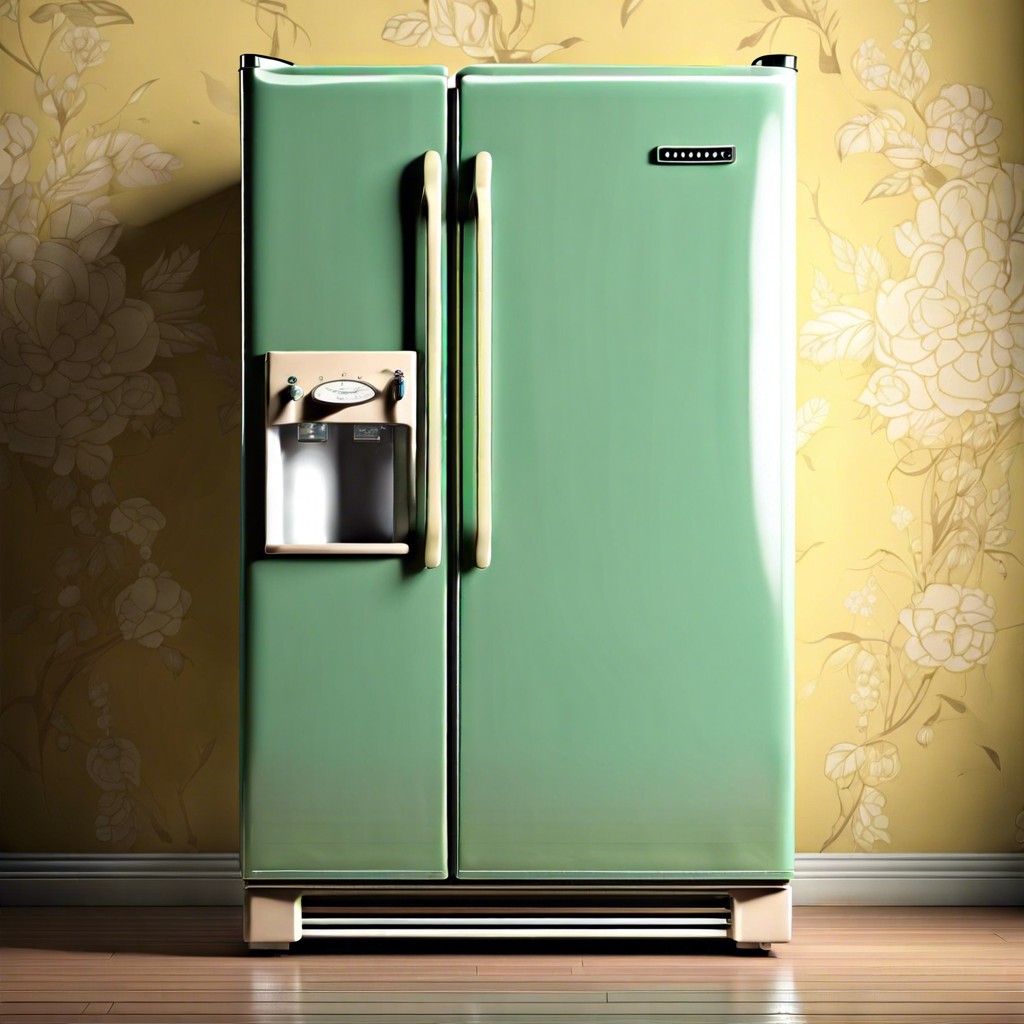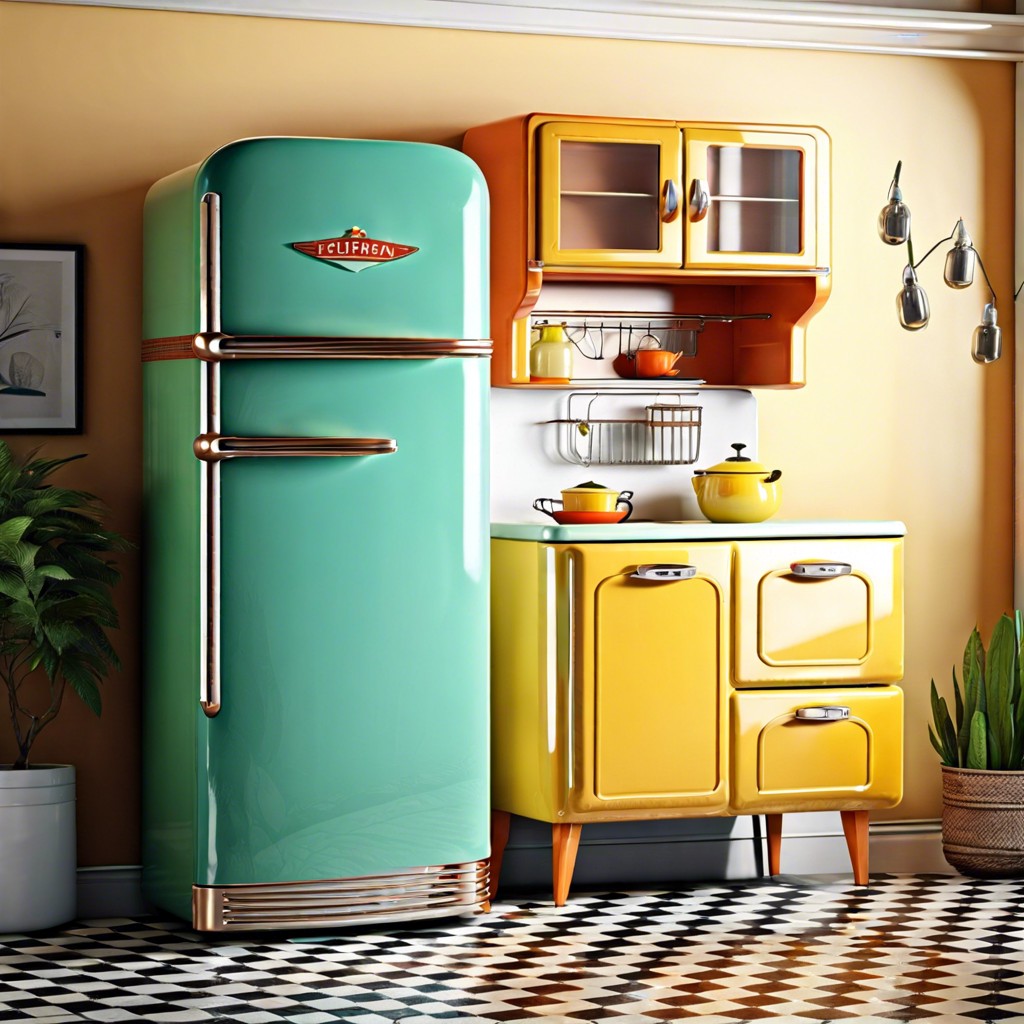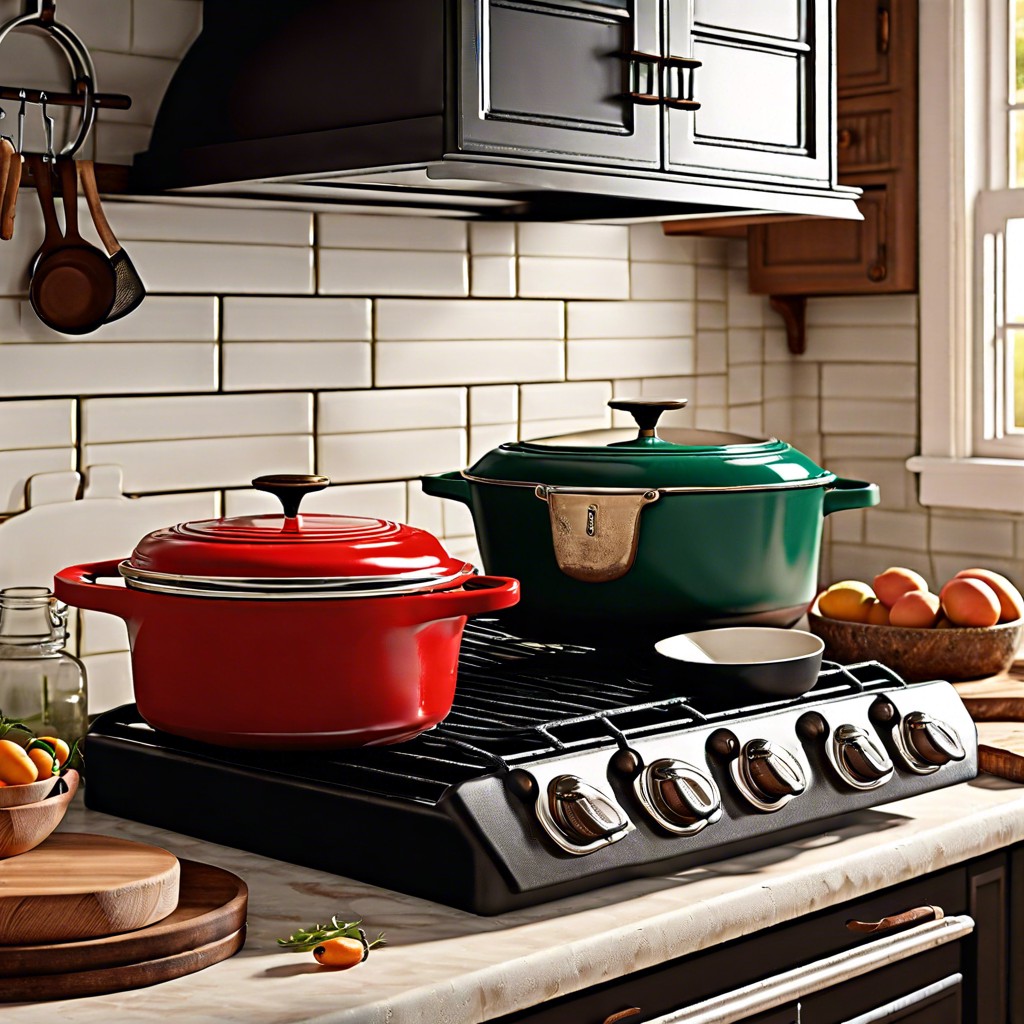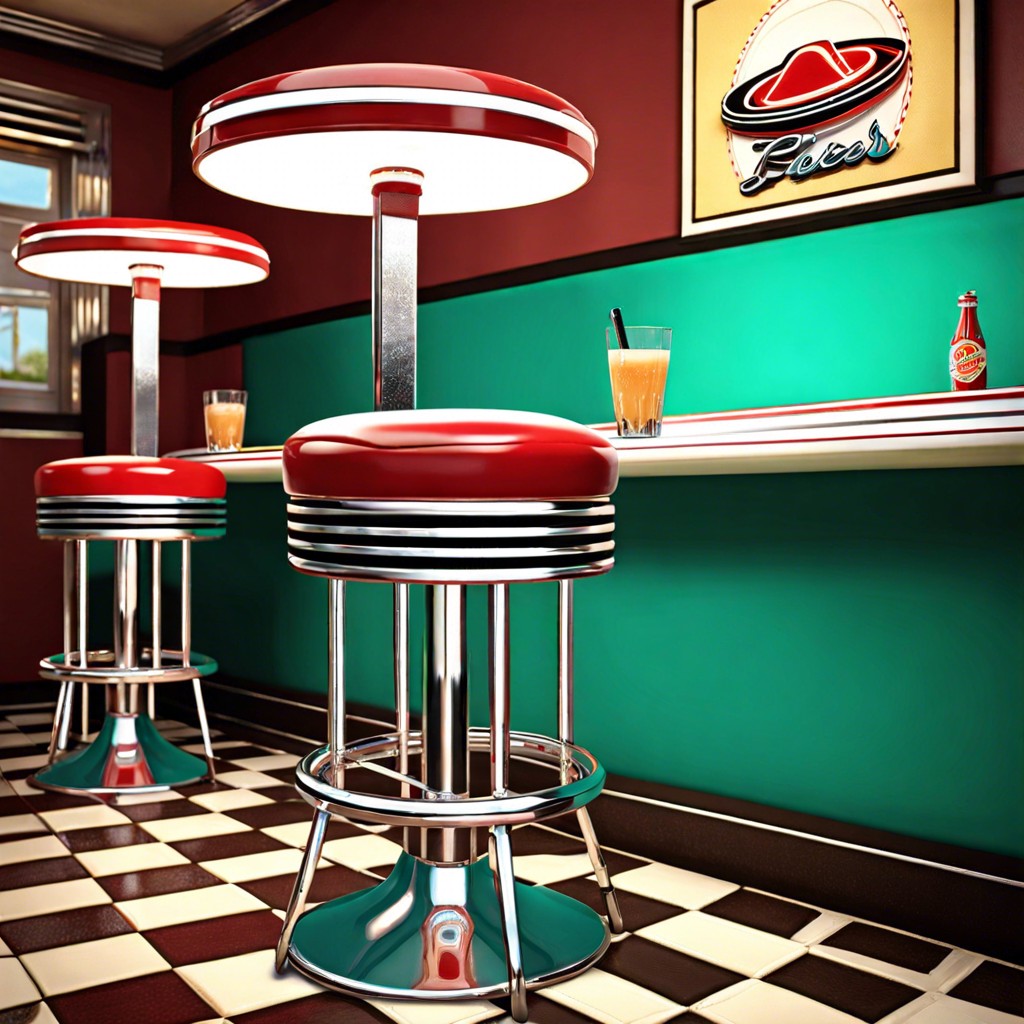Last updated on
Learn how to choose a retro refrigerator that adds a dash of vintage charm to your kitchen while meeting your cooling needs.
Key takeaways:
- Retro refrigerators evoke nostalgia and add character to modern homes.
- Their aesthetics include vibrant colors, chrome finishes, and retro typography.
- Popular brands include Smeg, Big Chill, Northstar, and Gorenje.
- Retro-style models are energy efficient and come in compact sizes.
- Retro refrigerators can increase home value and attract buyers.
Historical Allure of Retro Appliances

Nostalgia often drives the appeal of retro appliances; they evoke fond memories and a sense of simpler times. These pieces aren’t just machines; they’re time capsules that add character and charm to modern homes. Collectors and homeowners alike prize them for their craftsmanship and the enduring materials used in their construction.
In a marketplace dominated by stainless steel and sleek lines, the curves and vibrant colors of retro refrigerators stand out, providing a visual anchor in kitchen design. They remind us of a time when design paid homage to fashion and fun, rather than just functionality.
Moreover, the durability of these older models often surpasses that of some newer, less sturdy counterparts. Their longevity speaks to an age when appliances were built to last, solidifying their standing in contemporary kitchens not just as functional items but as conversation pieces with a story.
Retro Refrigerator Aesthetics

Bright chrome handles, polished curves, and vibrant colors typify the design of these nostalgic chillers, reviving the charm of the 1950s. They serve as a focal point in any kitchen, beckoning a bygone era when designers infused everyday objects with personality and flair. It’s as if the soft hum of these appliances is whispering stories from the past.
The chrome finishing and curved lines are not just pleasing to the eye but practical, too. Their rounded edges minimize injury risk—a subtle nod to family-friendly design. The color options, from fiery red to pastel blue, allow homeowners to splash a bit of their personality into their kitchens. These fridges have become not just food storage units but conversation starters, evoking a sense of warmth and whimsy.
Beyond the colors and chrome, the fonts and emblems emblazoned on these retro refrigerators also deserve mention. They reflect the typography and branding of the era, reinforcing authenticity. These details complete the aesthetic, anchoring these modern appliances firmly in the visual language of the past.
Remember, selecting a retro refrigerator is less about just keeping the milk cold and more about making a statement. It’s about crafting an atmosphere that’s equal parts practicality and pizzazz—turning the act of making your morning coffee into a time-traveling experience.
Popular Brands and Models

Smeg stands out with its colorful fridges, capturing the spirit of the 1950s with smooth, rounded lines and vibrant hues. These models often become the centerpiece of a kitchen, merging nostalgic design with modern functionality.
Big Chill is another noteworthy brand that strikes a balance between vintage charm and contemporary convenience. Their Retro collection features a variety of sizes, from compact under-counter models to full-size units, promising a match for every space.
Northstar fridges by Elmira Stove Works come with customizable color options. Their design mimics the classic auto-body styling of the 1950s, complete with chrome accents. Elmira offers additional features like keg systems, further marrying old-school flair with modern indulgence.
Lastly, for those favoring a minimalist retro touch, Gorenje supplies a subtler aesthetic with its retro bottom freezer refrigerators. They add a touch of vintage class without overwhelming the kitchen’s visuals, conserving a more reserved style palette.
Energy Efficiency of Retro-style Models

While vintage designs often whisper tales from a bygone era, modern retro refrigerators have learned some new tricks, particularly in the way they consume energy. The charm of these units does not lead to compromise on functionality, often the contrary. Manufacturers have ingeniously integrated today’s technology into yesteryear’s styles.
Models like the Smeg 50’s Retro Style or the GE Artistry series boast impressive energy ratings, with some even earning ENERGY STAR® certifications. This means lower electricity bills and a smaller carbon footprint, proving that beauty can be environmentally conscious. It’s a classic case of getting the best of both worlds – vintage looks with 21st-century efficiency.
To maintain a chill without sending your power meter into a frenzy, advancements in insulation and compressors are key. Contemporary retro fridges use more refined, less energy-intensive components than their ancestors, while ensuring your leftovers stay cold and your ice cream frozen. Insulation materials have also taken a leap forward, keeping the cold in more effectively.
Lastly, consider the size. Retro refrigerators often come in more compact dimensions, naturally requiring less energy to stay cool. It’s as if these appliances are jogging rather than sprinting, keeping pace with modern energy standards without breaking a sweat.
Retro Refrigerators and Home Value

Retro refrigerators can be like the cherry on top for a well-designed kitchen, adding a splash of nostalgia that often translates to real-world currency. They are not simply appliances but can act as statement pieces that catch the eye and spark conversations. This can be especially true in homes where the decor reflects a vintage or retro theme throughout.
Potential buyers with a penchant for vintage charm may see a higher value in homes that feature these stylish appliances. This appeal can sometimes nudge property values upward. The key is to strike a balance; the refrigerator should complement the home’s overall aesthetic without overwhelming it.
Furthermore, these appliances can be the deciding factor for buyers torn between similar properties. A home boasting a mint-condition retro refrigerator could be perceived as more attractive, thus creating a competitive edge in the market.
It’s worth noting that when these appliances are part of a kitchen with other period-appropriate details, they contribute to a sense of authenticity that can be appealing to specific market niches. Consequently, for sellers looking to appeal to such demographics, investing in a retro refrigerator might just be a shrewd move.
Related:




